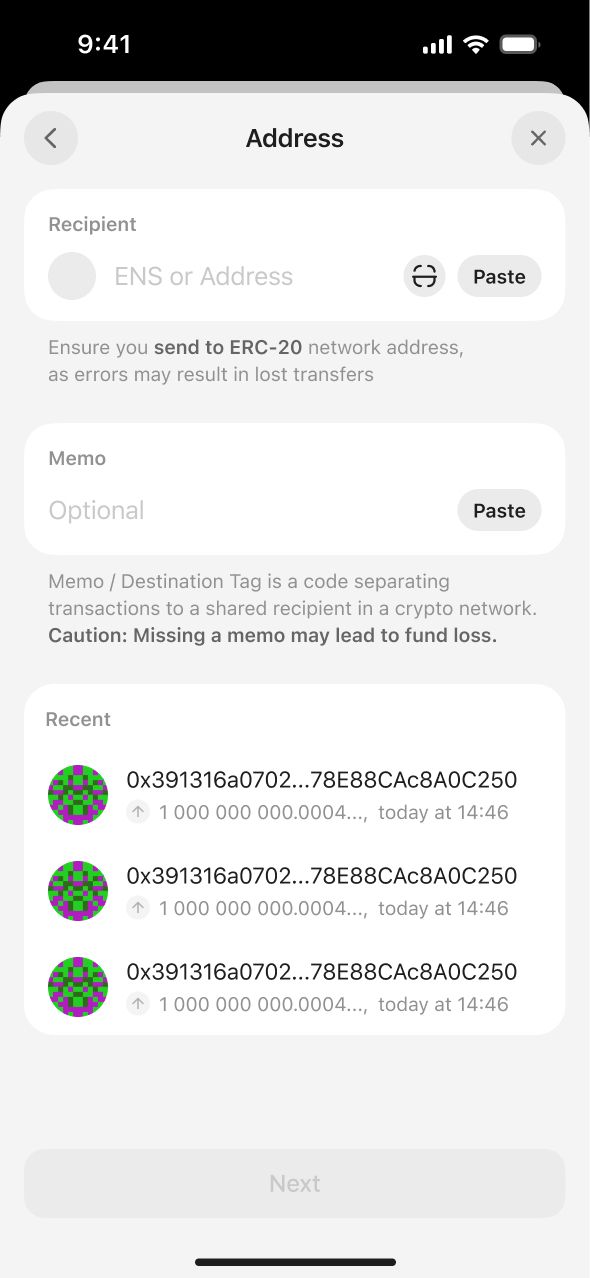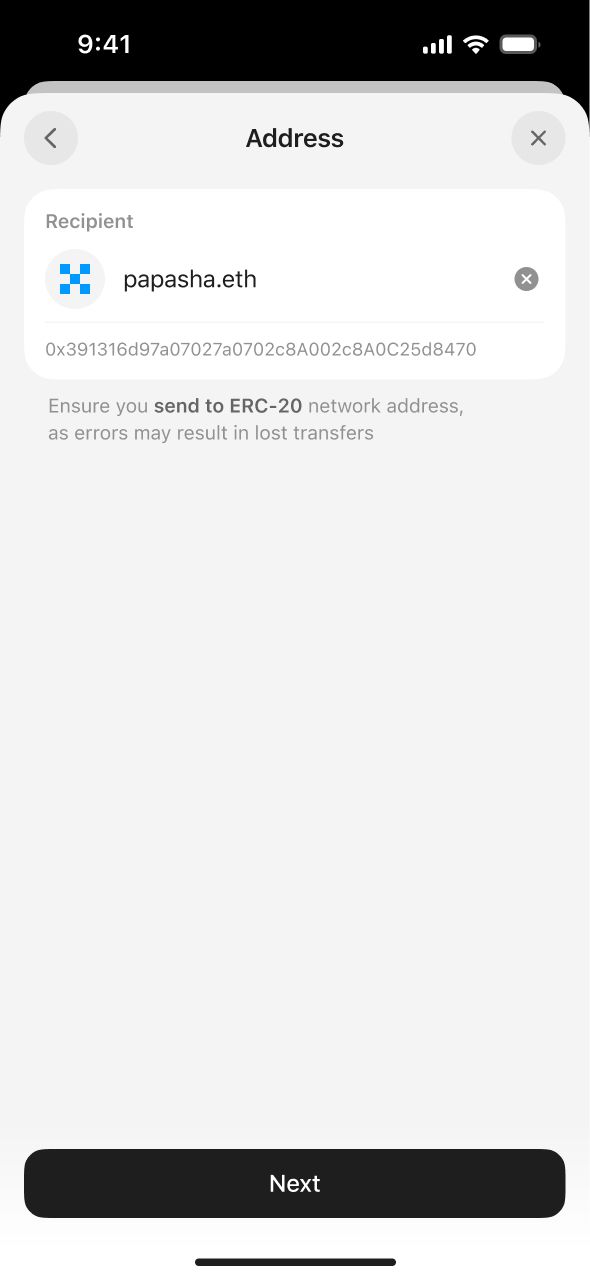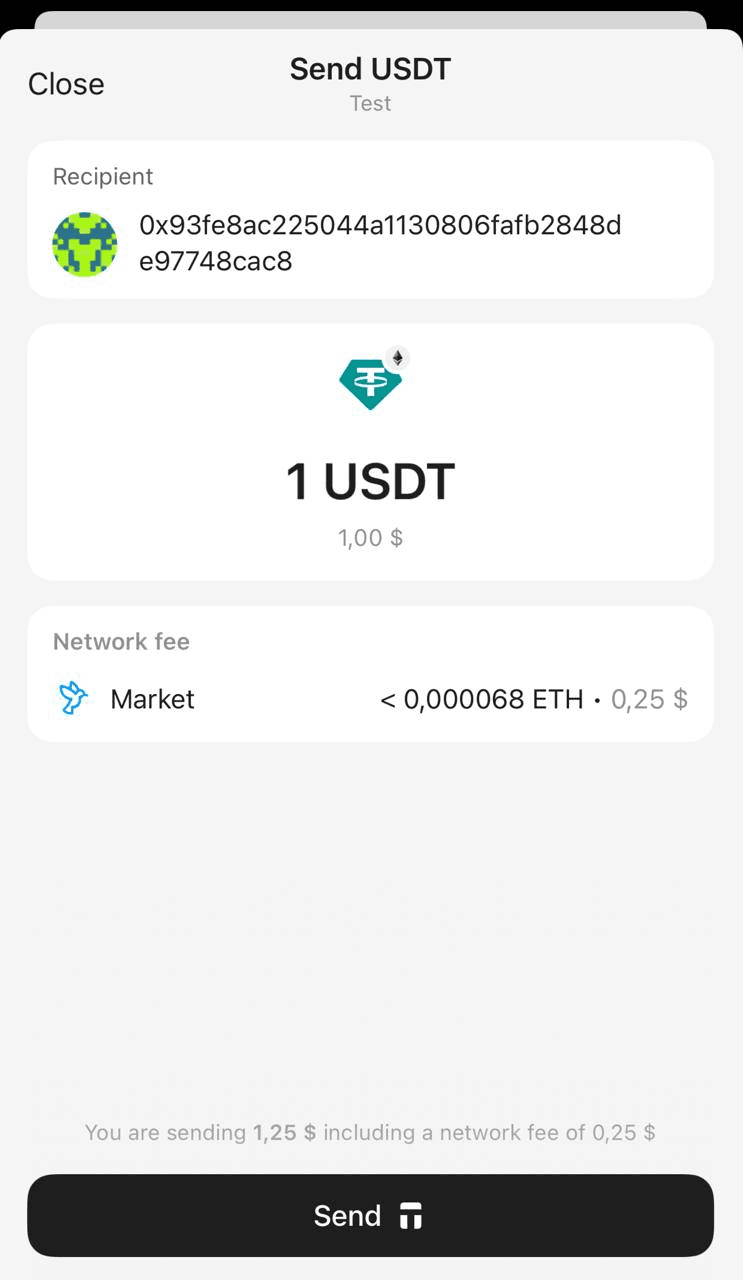Ethereum Name Service (ENS) Addresses in Tangem Wallet
Say goodbye to long crypto addresses. ENS makes Ethereum as simple as a name.

AI summary
The article explains how Ethereum Name Service (ENS) simplifies cryptocurrency transactions by converting complex Ethereum addresses into easy-to-remember names, much like domain names for websites. It details how ENS works, its value, and provides a step-by-step guide on sending crypto to ENS domains using the Tangem Wallet, making blockchain transactions more user-friendly and secure.
Are you tired of copying and pasting long, confusing crypto addresses? ENS domains simplify Ethereum transactions by turning those messy strings of numbers and letters into clean, memorable names, just like how website domains replaced clunky IP addresses.
Built on the Ethereum blockchain, ENS works like the internet’s DNS but for crypto, making transactions faster, safer, and far more user-friendly. With ENS, sending and receiving ETH becomes as easy as sharing a name you’ll never forget. This guide will show you how to send crypto to ENS addresses in the Tangem Wallet.
What is Ethereum Name Service (ENS)?
Ethereum Name Service (ENS) is a blockchain-based naming system built on Ethereum. It converts long, complex Ethereum addresses into simple, human-readable names like alice.eth.
It works like the Internet’s DNS, which turns IP addresses into easy-to-remember website names. ENS doesn’t replace DNS—it works alongside it to make blockchain addresses easier and safer to use.
How does ENS work?
If you want to pay for a coffee in Starbucks with an ERC-20 token, e.,g ETH, Ana the barista could provide their public Ethereum address, which consists of 42 characters in hexadecimal format and may appear as: 0xd1BCC402bb88Cc3d174a66017755264DfAF8C2F3
ENS eliminates the challenge of remembering such a long public key, lowering the risk of entering the address inaccurately. Instead, cryptocurrency users can represent their public address with a memorable, human-readable name or phrase like jacobson.eth.
The architecture of ENS comprises two smart contracts: the registry and the resolver.
The ENS registry is a singular smart contract that maintains a comprehensive list of all domains and subdomains accessible through the ENS service. It also retains three essential pieces of information associated with each domain:
- The domain's owner: an external account or a smart contract.
- The resolver for the domain: the entity responsible for the actual translation of ENS names into addresses and vice versa.
- The caching time-to-live for all records under the domain indicates the time required to convert the names into addresses.
The ENS resolver is the smart contract integral to the service, responsible for converting the human-readable ENS domain names into their corresponding cryptographic addresses and vice versa.
The resolver achieves this through a two-step process: first, it queries the registry to identify which resolver handles the name, and then it asks that resolver for the answer to the inquiry.
ENS operates as a hierarchical system, just like existing domain name services on the World Wide Web, and gives domain owners authority over their subdomains. This means a domain owner, such as jacobson.eth, can create additional subdomains, such as meet.jacobson.eth.
How to get an ENS domain
To buy an ENS domain, search for a desired name, select a registration period, connect your crypto wallet, and complete the registration.
- Search for an available name on the ENS app.
- Connect your Tangem wallet.
- Confirm two transactions to register your name.
- Choose how long you want to keep it (renewal is required).
- Once registered, you can set up subdomains and link your name to different crypto addresses.
Why does ENS have value?
ENS simplifies sending and receiving cryptocurrencies by reducing errors that can occur when copying long addresses. ENS also has a governance token called ENS, which gives its holders various powers, such as voting on proposals within the ENS DAO and helping to shape the future direction of the protocol.
How to send crypto to ENS domains in Tangem Wallet
Here’s a short guide on how to send crypto to an ENS domain using your Tangem Wallet:
- Launch the Tangem app on your phone and log in.
- Select the cryptocurrency you want to send. For example, USDT on the Ethereum network.
Tap Send to open the send screen and enter or paste a wallet address.

Enter the ENS domain. Type the ENS name instead of a long address (e.g., papasha.eth).

- Enter the amount of tokens you want to send.
Tangem will automatically resolve the ENS domain to the correct Ethereum address. Review the details, including the resolved address, network fee, and amount, then tap Send.

- Enter your access code or biometric ID and sign the transaction.
- The transaction will be processed on the Ethereum blockchain. Once confirmed, the recipient will receive the funds.
FAQ: ENS Addresses in Tangem
What exactly is new in this ENS integration?
The latest update introduced full ENS (Ethereum Name Service) support in Tangem. Previously, you could send to an ENS address, but there was no clear indication in the interface. Now, Tangem not only resolves ENS names but also shows the linked address visually in-app, so you can confirm exactly “which address this belongs to” before sending.
Can users send and receive with ENS? What’s the upgrade from the prior version?
Yes. Tangem now supports both sending and receiving with ENS addresses. The big upgrade is that the wallet clearly shows the ENS resolution in the UI, making it more transparent and user-friendly.
How can I send using ENS?
It’s simple: just type in the ENS domain (e.g., yourname.eth) instead of a long hex address. Copy-paste works as well. Tangem resolves it automatically and shows the corresponding Ethereum address for confirmation.
Does QR code scanning work with ENS addresses?
Not yet. ENS names don’t have QR codes. QR scanning still works for traditional hex addresses, while ENS is typed in directly.
Can I register or manage an ENS name directly in Tangem?
Not yet. Currently, you can use ENS addresses for sending and receiving, but domain registration and management still need to be done through ENS apps like app.ens.domains.
Which blockchains are supported with ENS?
ENS domains primarily resolve to Ethereum addresses. If you’re sending tokens on Ethereum or ERC-20 assets, you can use ENS in Tangem. For other blockchains (e.g., Solana, Bitcoin), ENS does not apply.
Are ENS transactions more secure than using raw addresses?
ENS is not inherently “more secure,” but it is less error-prone. Humans are more likely to mistype a long address than a short ENS name. Tangem still signs and broadcasts the transaction securely, exactly as it would with a raw address.
Can I set my Tangem wallet as the owner of an ENS domain?
Yes. If you already own an ENS domain, you can set your Tangem wallet’s Ethereum address as the owner or controller. This way, your ENS name points directly to your Tangem wallet.
Will Tangem add ENS-like support for other blockchains (Kaspa, Solana, etc.)?
For now, no. ENS is specific to Ethereum. Similar naming systems (like SNS for Solana) may be considered later, possibly toward the end of the year.
